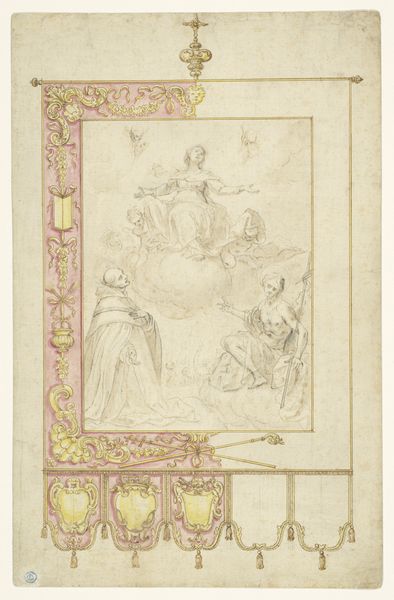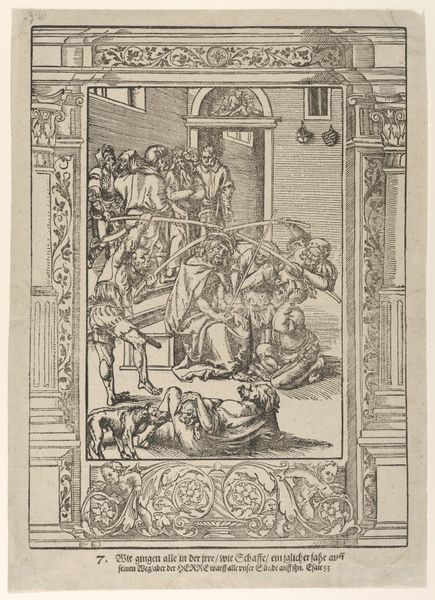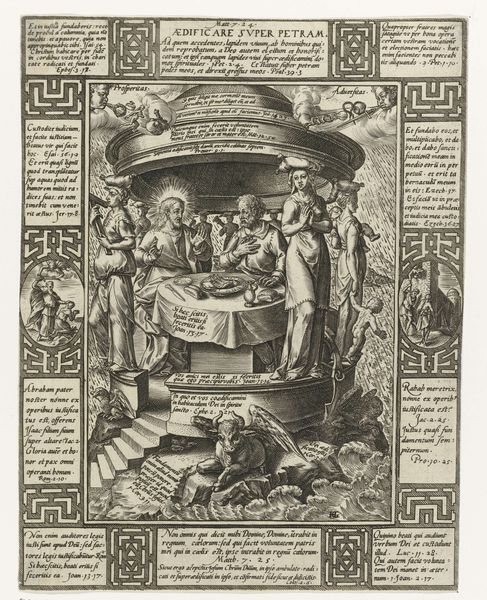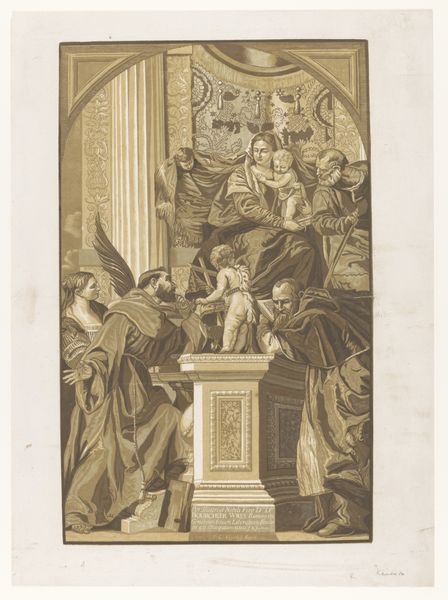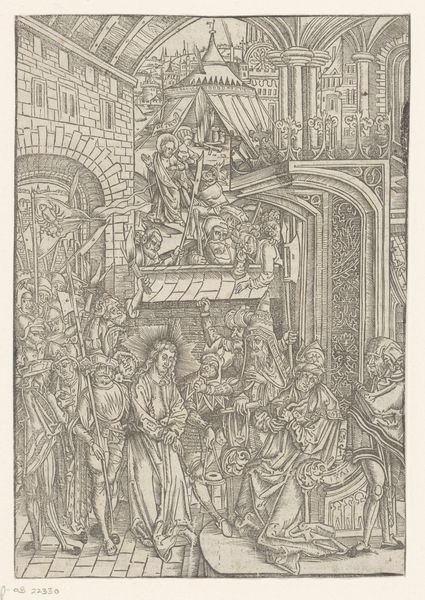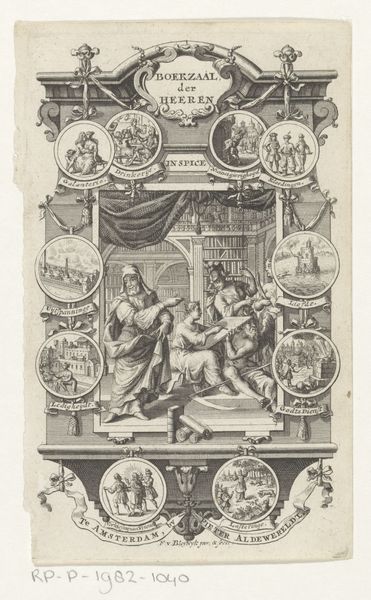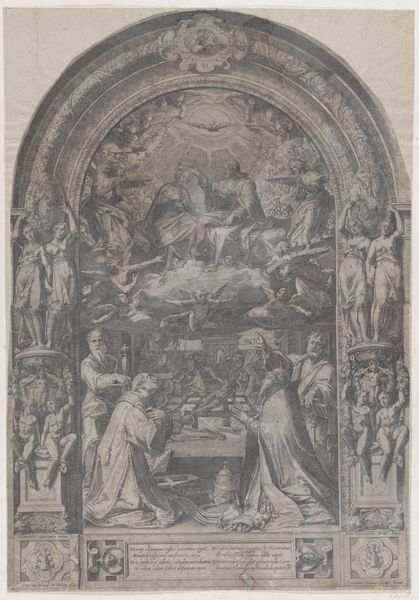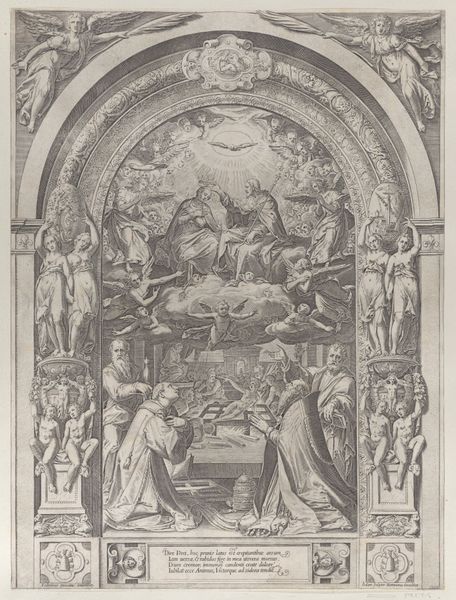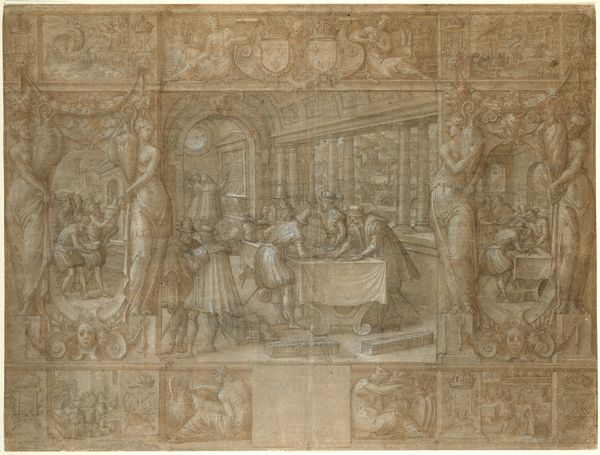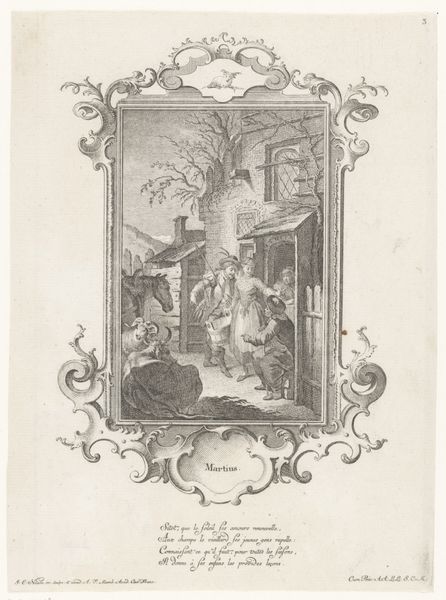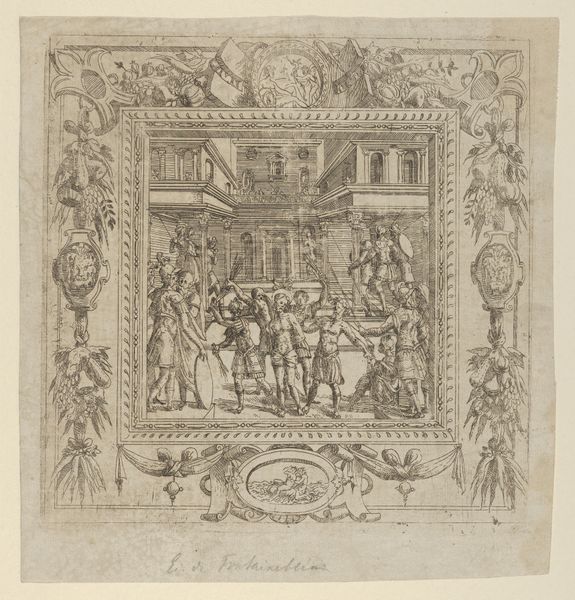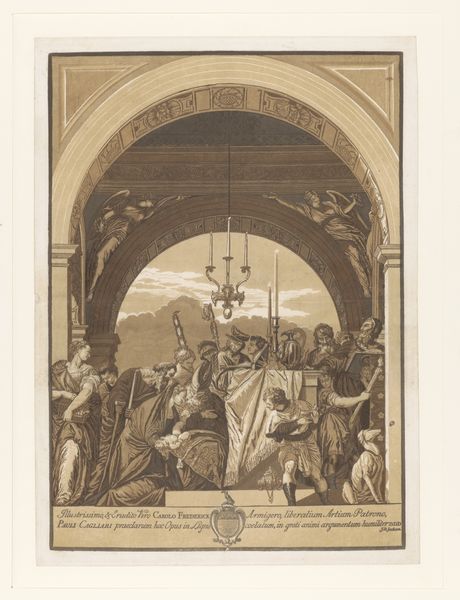
Die Spinnstube_ Entwurf zu dem Titelblatt der bei Sauerländer herausgegebenen Spinnstube 1885
0:00
0:00
drawing, print, paper, ink, pen
#
drawing
#
16_19th-century
#
narrative-art
# print
#
paper
#
ink
#
pen
#
genre-painting
Copyright: Public Domain
Curator: This intricately rendered drawing is entitled "Die Spinnstube," a design for the title page of a publication, created by Johann Baptist Scholl the Younger around 1885. Executed in pen and ink on paper, it resides here at the Städel Museum. What captures your attention first? Editor: The overwhelming busyness, really. It’s like a compressed social universe. Everyone seems to be in their own little world, yet tightly knit within this interior. It almost feels medieval, despite being from the late 19th century. Curator: Indeed, there’s a deliberate evocation of earlier artistic styles. Scholl's piece harkens back to genre paintings, these visual narratives emphasizing scenes of everyday life, though he blends it with an almost symbolic layering. The “Spinnstube,” or spinning room, wasn't just about labor, but also social cohesion. Editor: So it becomes this symbolic space, loaded with meaning beyond just textile production? The presence of the angelic figures above the room gives the mundane scene this strange grandeur, doesn’t it? A celebration or idealization, perhaps? Is there any tension created by those figures that elevates the space with a sense of importance or purpose? Curator: I think so. These figures holding a banner almost suggest a validation from above, reinforcing the virtues of community and industry. While simultaneously invoking a cultural memory. It is interesting to explore whether the artist sought to contrast or harmoniously bind the earthly realm of labor with the spiritual realm. Is this glorification propaganda or a truthful view of the period's sentiments towards community? Editor: Given its function as a title page design, the element of public perception becomes crucial, don’t you think? To attract an audience and possibly to encourage values within society that may not actually reflect the living situations of its members. Also, the visual vocabulary is strikingly old-fashioned, perhaps strategically appealing to a sense of nostalgia, during an industrial transformation. Curator: It prompts reflection. Scholl presents a layered world; we begin with his artistic inspirations and consider the purpose for public dissemination. He has skillfully created both a record and commentary of social life. Editor: Precisely, by intertwining artful imitation with poignant observation, the drawing captures not just a scene, but the social currents running beneath it.
Comments
No comments
Be the first to comment and join the conversation on the ultimate creative platform.
